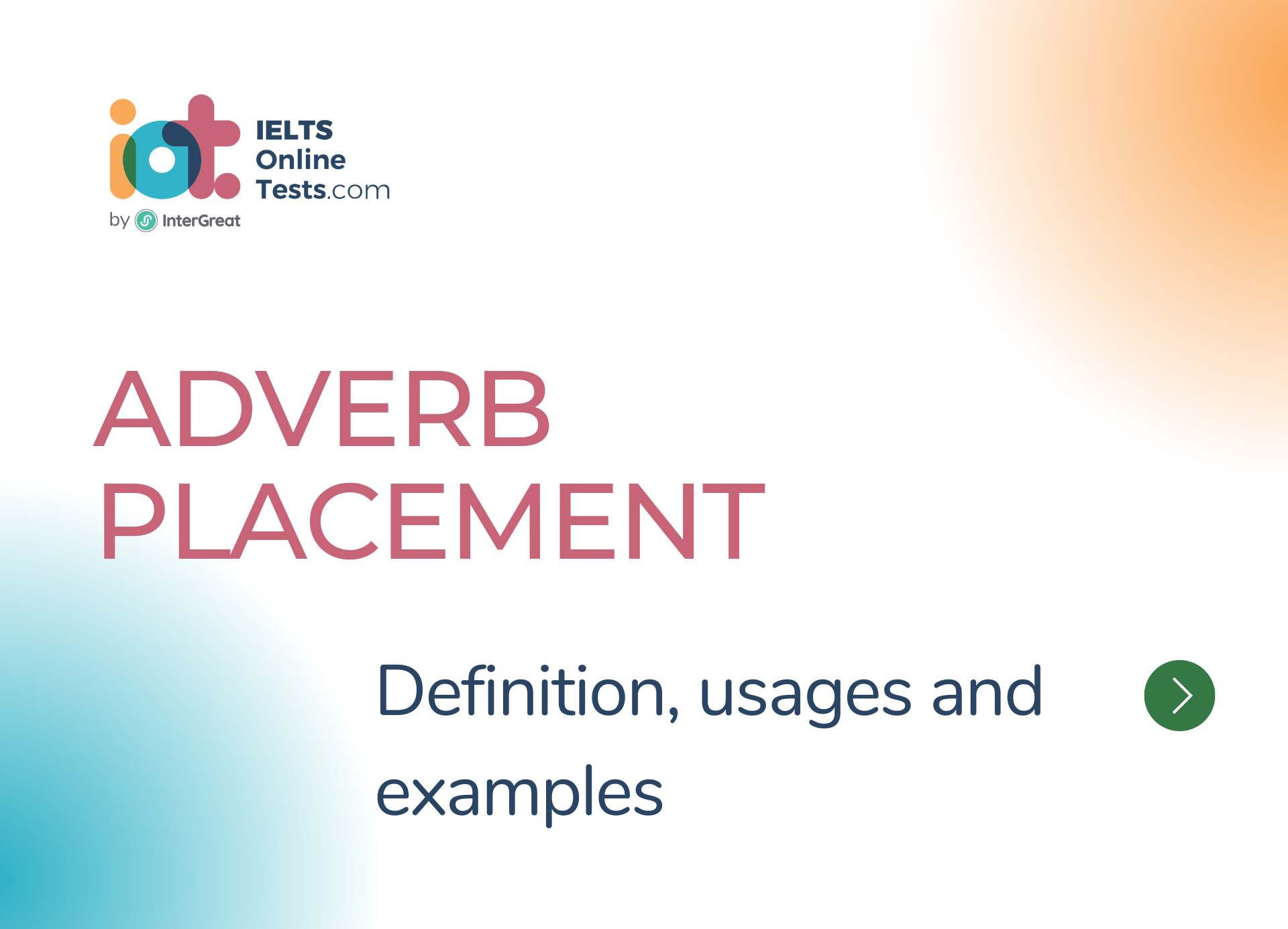
Adverb placement
Adverb placement refers to the position of adverbs in a sentence. The placement of adverbs can impact the meaning and emphasis of a sentence.
Here are some guidelines for adverb placement:
Front Position: Adverbs can be placed at the beginning of a sentence or clause to emphasize or introduce important information.
- Example:
- "Yesterday, I went to the store."
- "Unfortunately, she missed her flight."
- Example:
Mid Position: Adverbs are often placed before the main verb in a sentence, between the auxiliary verb (if present) and the main verb.
- Example:
- "She will carefully consider the options."
- "He has never visited that city."
- Example:
End Position: Adverbs can be placed at the end of a sentence or clause, after the verb or object, to provide additional information.
- Example:
- "He walked quickly to catch the train."
- "She sang beautifully in the concert."
- Example:
Sentence-Initial or Sentence-Final Position: Adverbs can be placed at the very beginning or end of a sentence for emphasis or to set the overall tone.
- Example:
- "Clearly, something needs to change."
- "I love her, truly."
- Example:
Adverbial Phrases: Adverbs can be part of adverbial phrases, which are longer expressions that function as an adverb. These phrases can be placed anywhere in the sentence depending on the intended emphasis.
- Example:
- "In the morning, we went for a walk."
- "They worked throughout the night."
- Example:
It's important to note that the placement of adverbs can vary depending on the specific adverb, the intended emphasis, and the sentence structure. Adverb placement can impact the clarity, flow, and meaning of a sentence. Paying attention to adverb placement helps to ensure that the intended message is effectively communicated.















Comments:
Please don't give up, there's still hope for a tree cut down because at the scent of water it will come back alive.
thats what she said
josse4real08&yahoo.com
Nice programme thank you for this agood work but i submitted my answers and no check in listening part
its is excellent website for preparing ielts. my humble request of more ielts generla mock test. Please upload more general ielts mock so that people could prepare exame
July test
My English is very low and vocabulary and grammar is also very low. I am IELTS classes is first time first tym I will taking a mock test on Sunday afternoon
I do need help on writing skills and reading general
I want to give
it a try
why in practice test 1 some last answer cant be answered ? I mean i cant write or fill anything in it
why in practice test 1 in reading test some last answer cant be answered ? I mean i cant write or fill anything in it
7083187791